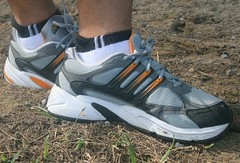The term ADAPTATION means - the way in which a particular structure suits to perform a particular function.
LEAVES' ADAPTATION FOR MAXIMIZING THE RATE OF PHOTOSYNTHESIS
- Leaves are generally horizontally positioned on the plants so that more sunlight can be absorbed.
- Leaves are generally broad which offers a large surface area which enable the leaves to absorb as much sunlight as possible. Having broad shape also enables more carbon dioxide to diffuse in into the leaves. (Some plants having small leaves compensated this by having numerous of these small leaves)
- Most leaves are thin and carbon dioxide has to diffuse across only short distances to reach the inner cells.
- Some leaves have thick waxy cuticle on the upper surface of the leaves to prevent evaporation of water (Remember, water is one of the requirements for photosynthesis. So it must be conserved).
- More chloroplasts containing chlorophyll are located on the upper surface of the leaves (mainly in the palisade mesophyll cells) to maximize absorption of energy from sunlight by the chlorophyll (Remember, the upper surface of the leaves are more exposed to sunlight, so only right that there should be more chloroplasts on the upper surface of the leaves).
- The palisade mesophyll cells are vertically arranged ends-on so that more cells are exposed to sunlight and hence more sunlight can be absorbed by the chlorophyll in these cells.
- Lots of stomata are generally found in the lower surface of the leaves. Being on the lower surface reduces transpiration hence conserving water. Being numerous in number allow more carbon dioxide to diffuse in into the leaves.
- There are lots of intercellular air spaces in the spongy mesophyll layer. This enables carbon dioxide to be stored for use in photosynthesis. Apart from this, it allows gaseous exchange to take place.
- The presence of branching network of veins provides a good water supply to the photosynthesizing cells. The veins also help to remove the products of photosynthesis to other parts of the plants.
